




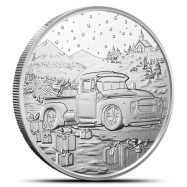




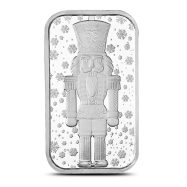








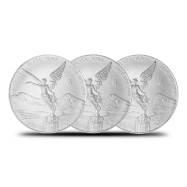


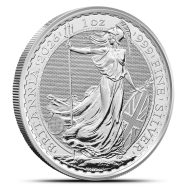
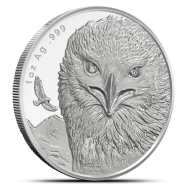

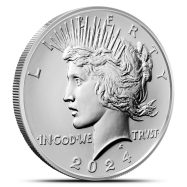
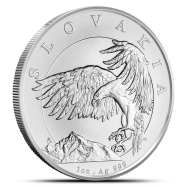














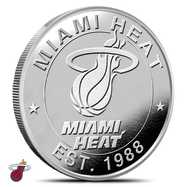

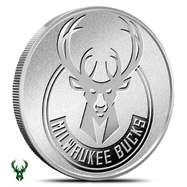






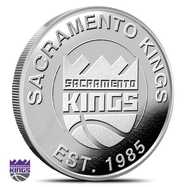




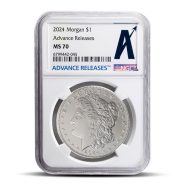



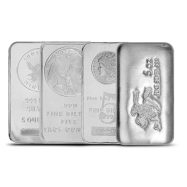





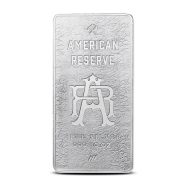
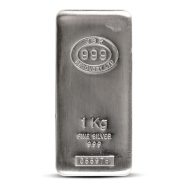
If you want to diversify your investment portfolio, precious metals are a good choice. Silver bullion has practical uses and offers a store of value, making this precious metal ideal for most portfolios. Learn more about silver bullion and the forms it comes in.
Silver is a precious metal that has been used as a form of currency for thousands of years. Silver bullion is the purest silver in the form of coins, bars, ingots or rounds.
You can buy silver bullion in a variety of sizes and weights, making it easy to build your collection in increments that work best for you. The least expensive way to invest in silver bullion is in the form of silver bars and rounds. Silver bullion is also one of the few precious metals that you can add to your individual retirement account portfolio, so it's a good long-term investment.
Silver is found at 0.08 parts per million in free elemental form in the Earth's crust, and there are mines all over the world. Silver is also a byproduct in the refining of copper, gold, lead and zinc. Global mining averages 800 million troy ounces per year [2].
Technological advances have driven silver production higher in recent times. Silver is used in circuits, batteries and electrical contacts, and most touchscreen-compatible gloves have silver threads woven in the fingertips.
Silver has been used throughout history to craft jewelry, household items and currency. Mesopotamia began using silver as early as 3000 B.C., sourcing it from Anatolia and Iran [1]. It was more expensive than gold in ancient Egypt as there was less of it available. Greeks began using silver coins as currency around 400 B.C. China began mining silver as early as 700 A.D., where it quickly replaced silk as merchants' preferred payment method.
Silver expanded to Central Europe in the Middle Ages then onto Central and South America at the beginning of the 18th century. Silver production finally made it to North America, Russia and Australia in the 19th century. Once silver made it to the New World, it flourished.
Silver bullion is considered to be a store of value, which is an asset that maintains value without depreciating over time. While the value of silver can change due to popularity and supply and demand, it's seen as a safe investment. Many investors use the silver market to preserve their wealth.
Silver spot price (the current price in which you can trade silver) is an important aspect to consider when looking to invest in this precious metal. The spot price is updated every second during open market hours, and it's determined by the economy, futures market, over-the-counter market, world events and strengths of competing currencies. Factors that help sustain silver bullion's performance include:
Several countries produce silver bullion coins, each with their own distinguishing features and value. Mints usually produce these coins annually, and they are backed by a government or central bank, which guarantees both weight and purity. Here are a few silver coins to consider adding to your collection, whether for investment or numismatic purposes:
Another option for purchasing silver bullion is in bars and rounds. Bars are available in cast bars, hand-poured bars and minted ingots. Bars tend to have lower premiums when compared to silver bullion coins. They are also available in a variety of styles, weights and sizes. Silver bar options include:
Rounds also offer lower premiums when compared to silver bullion coins because they are not refined nor produced by a sovereign mint. You can buy rounds in a variety of weights, including 1 ounce, 2 ounces and 5 ounces. Silver bullion rounds provide a lower initial investment with the ability to sell your collection in part or whole.
If you're looking to add precious metals to your investment portfolio, consider silver bullion. The store of value, variety of applications and continued growth are attractive reasons to buy silver.
Article Sources
1. Ancient History Encyclopedia. 'Silver in Antiquity,' https://www.ancient.eu/Silver/. Accessed October 12, 2020.
2. The Silver Institute. 'Silver Supply and Demand,' https://www.silverinstitute.org/silver-supply-demand/. Accessed October 13, 2020.